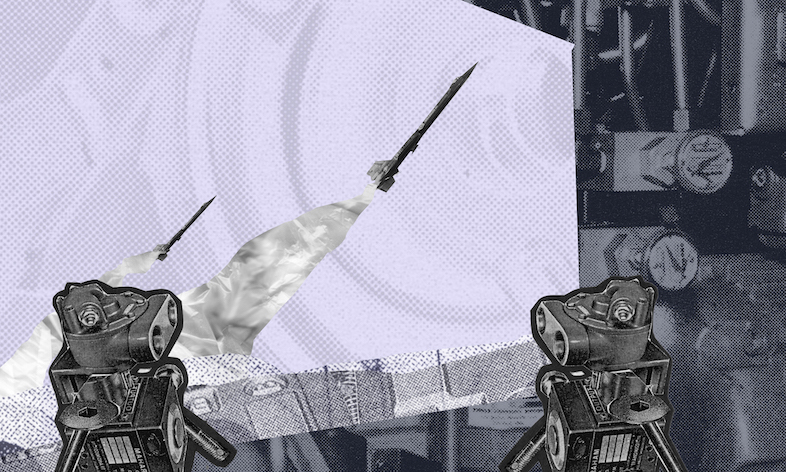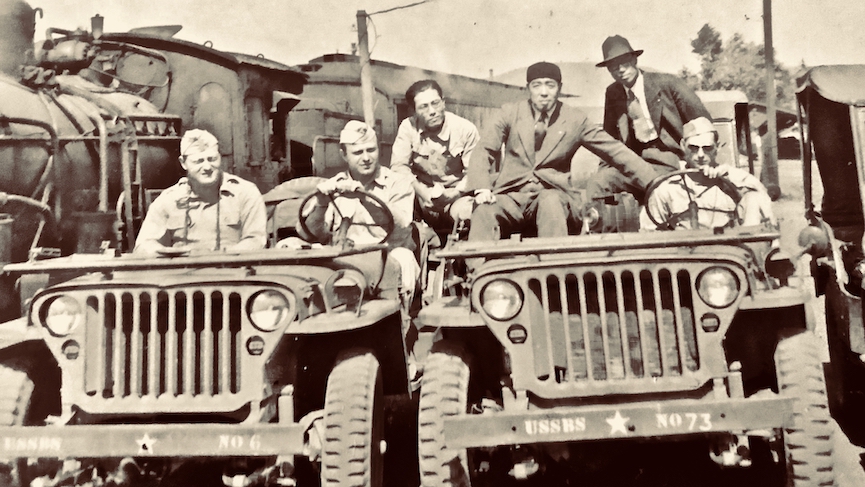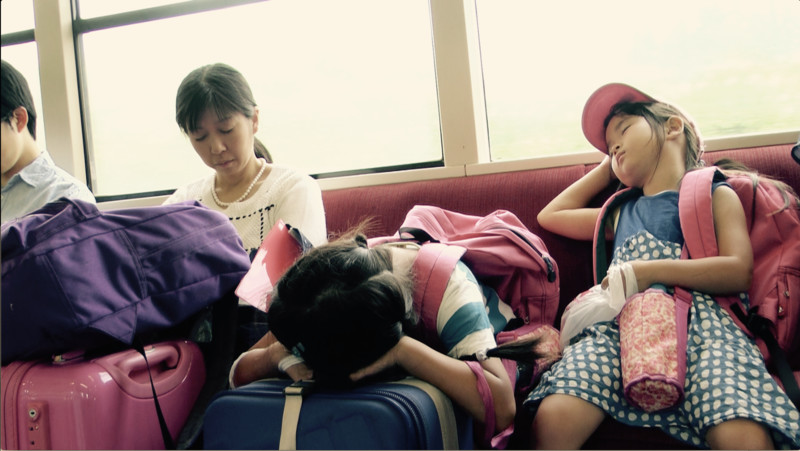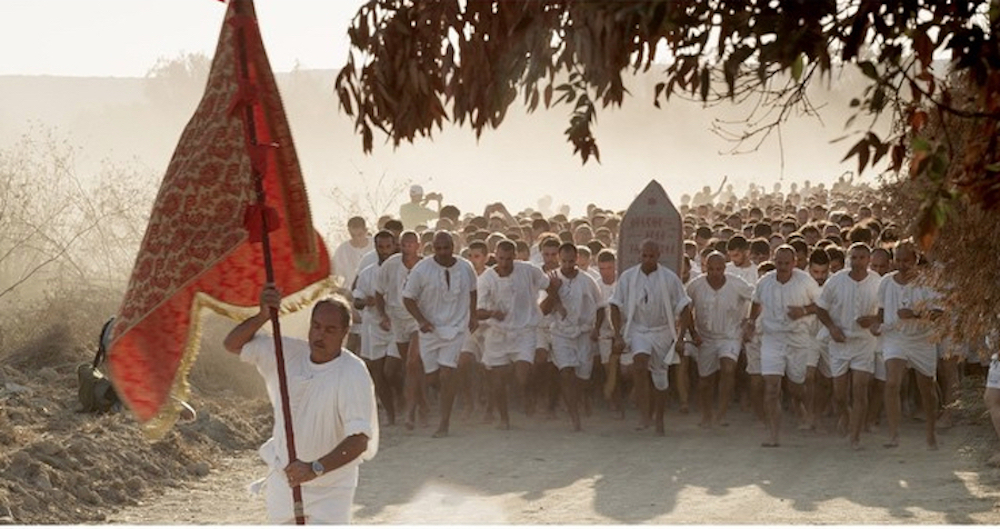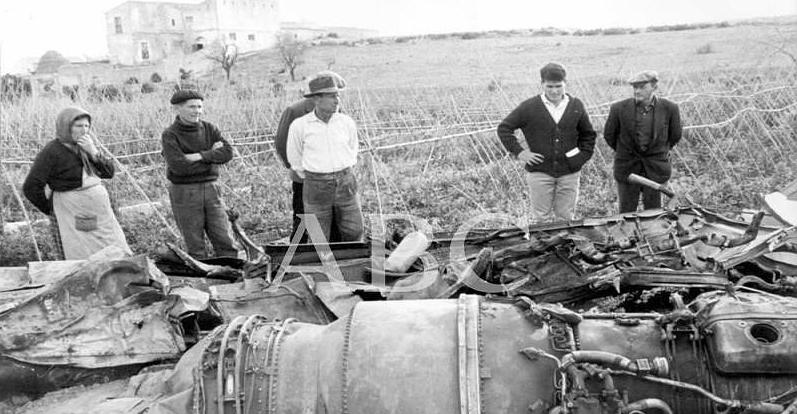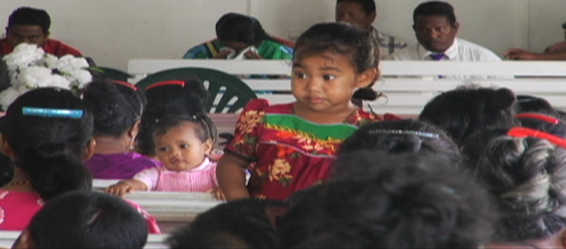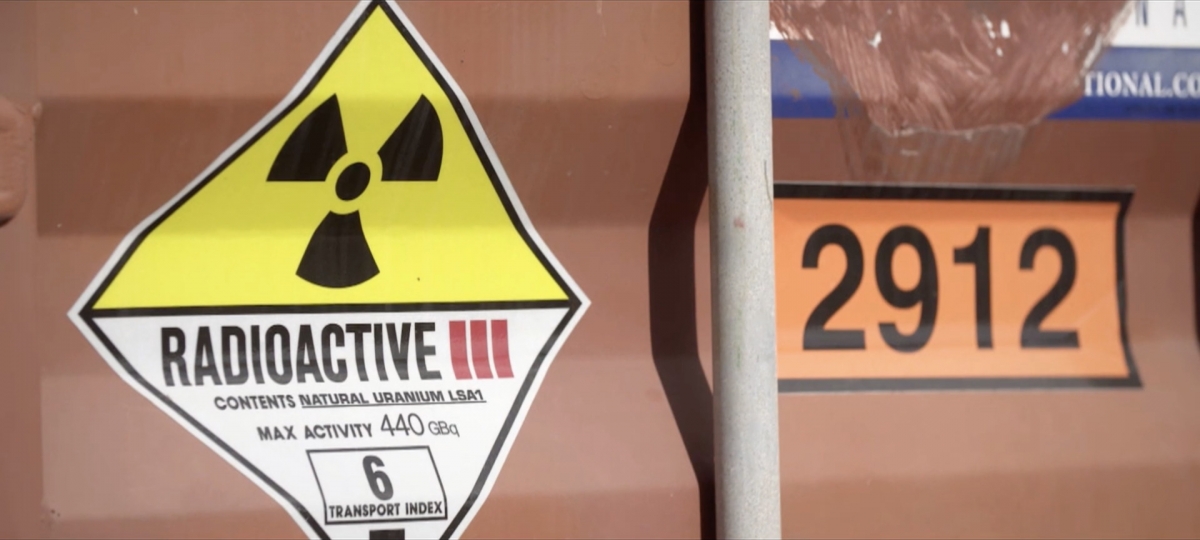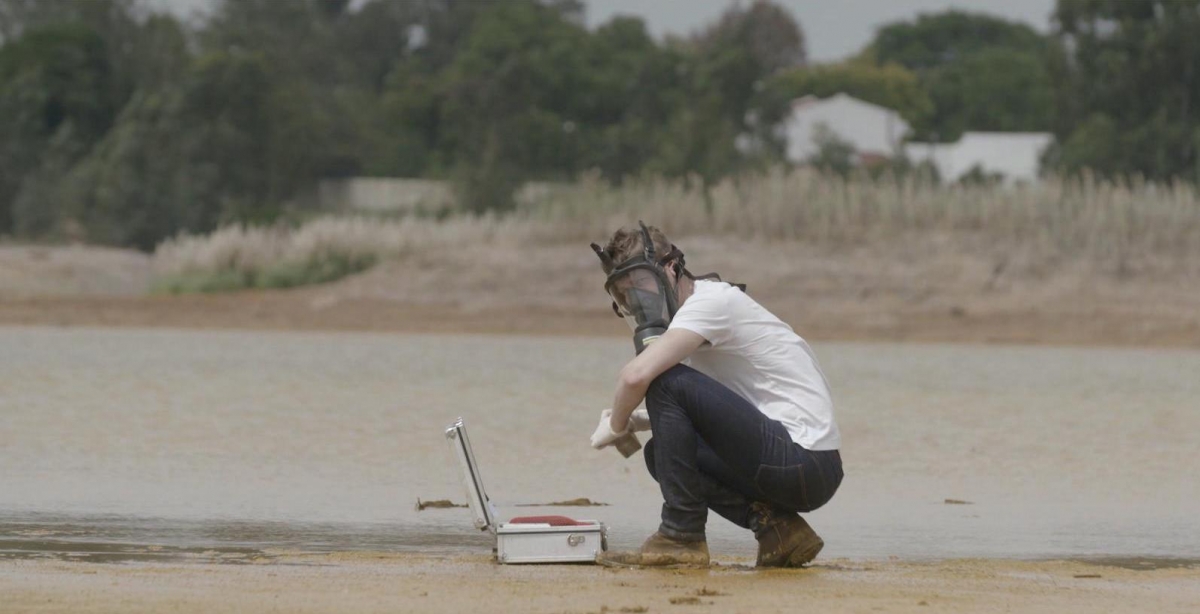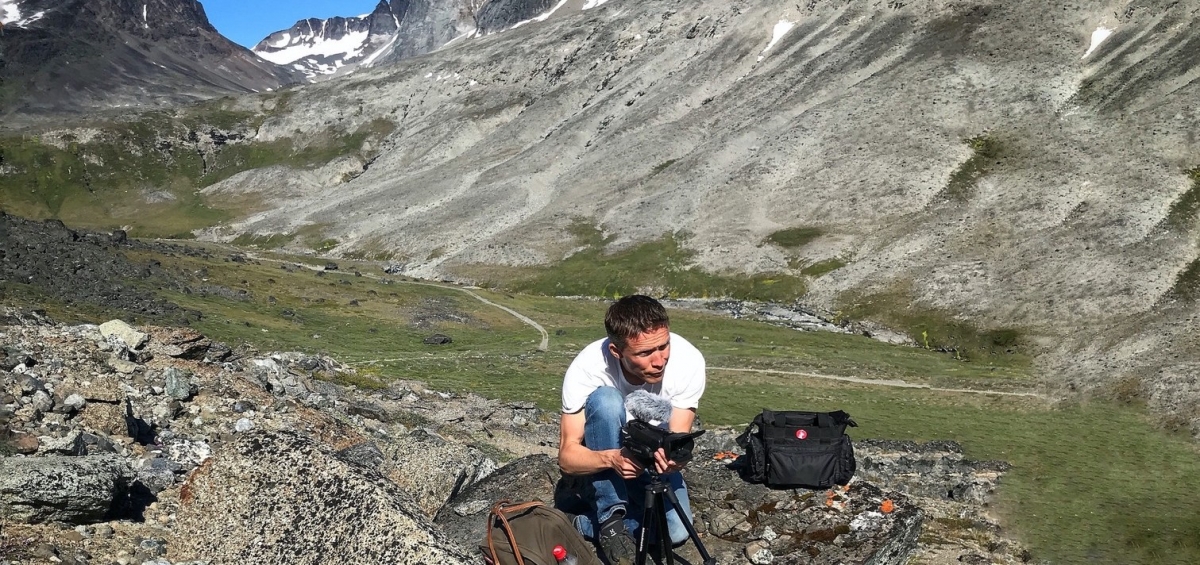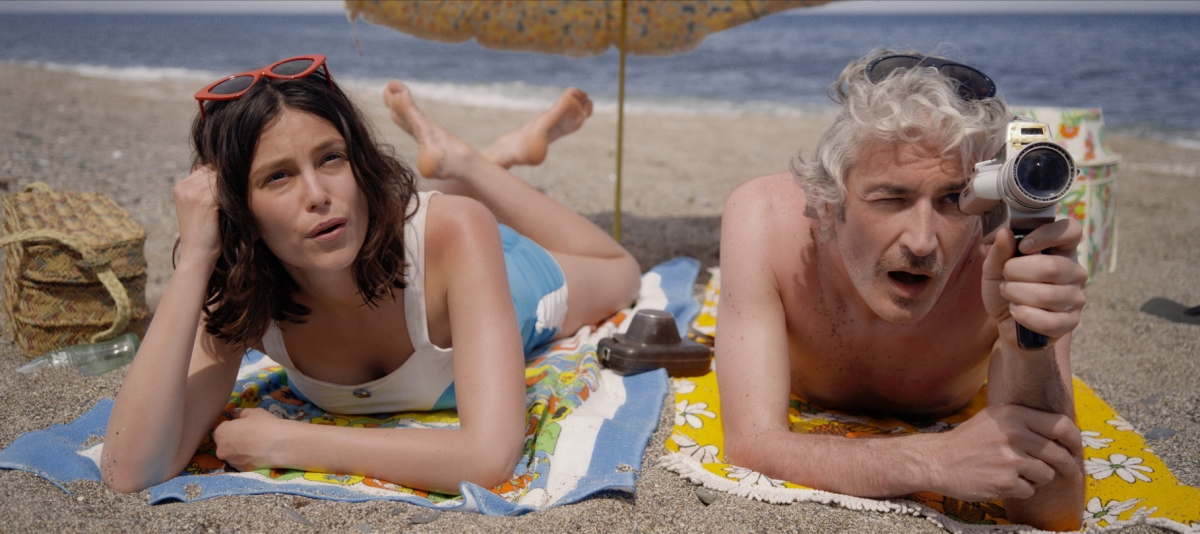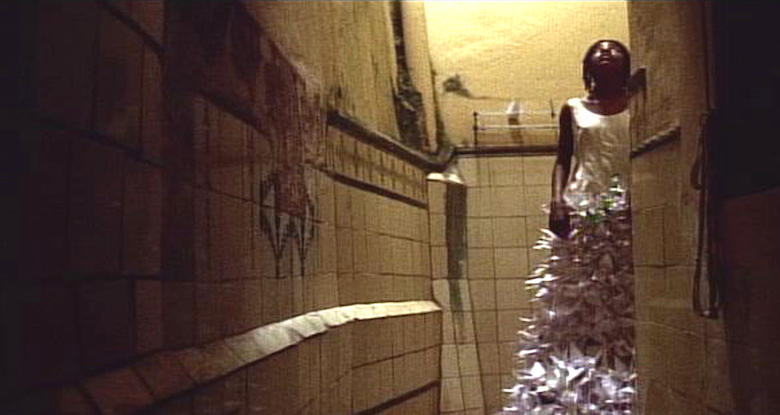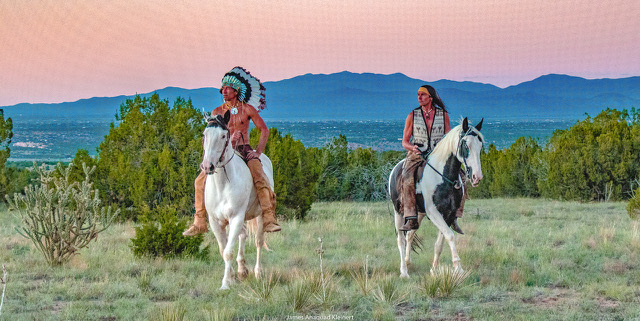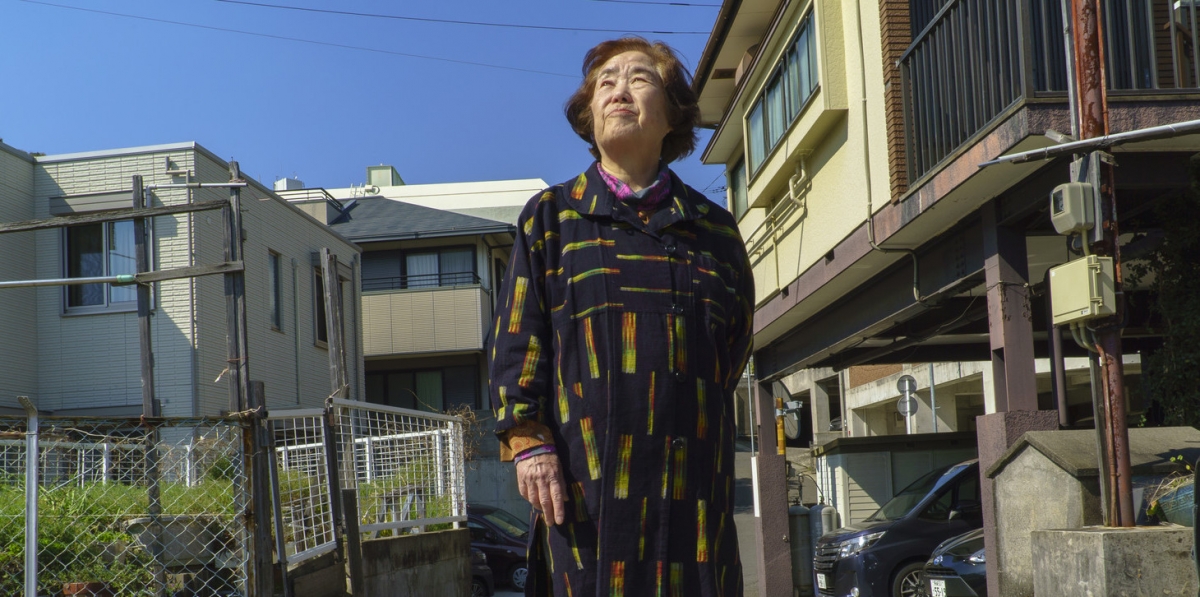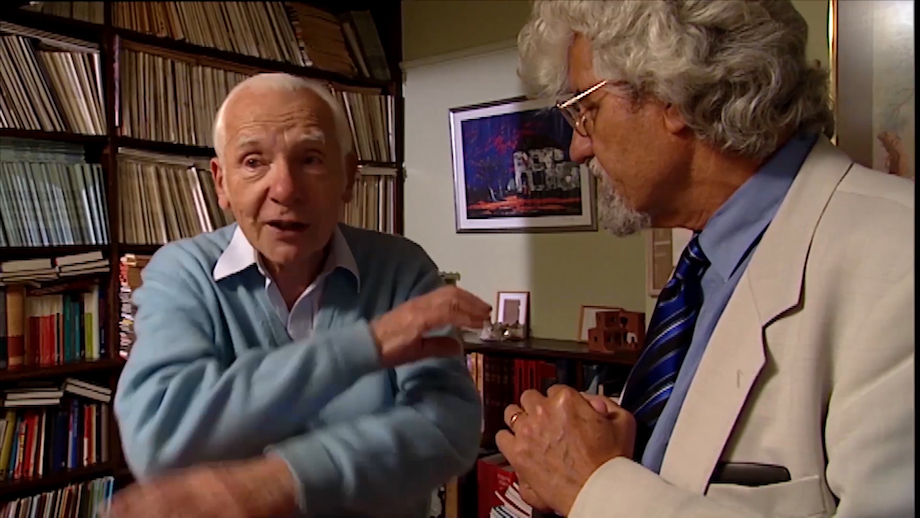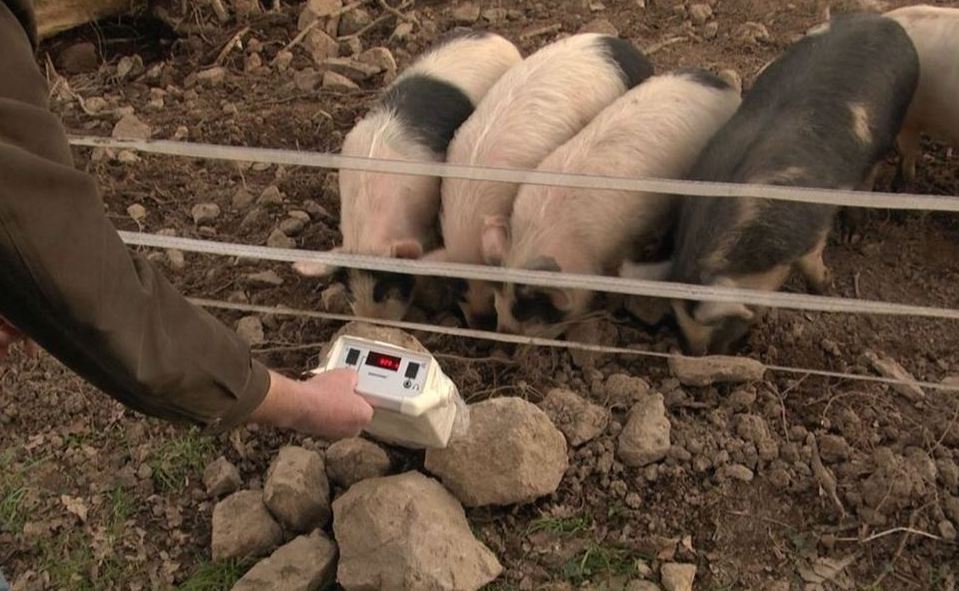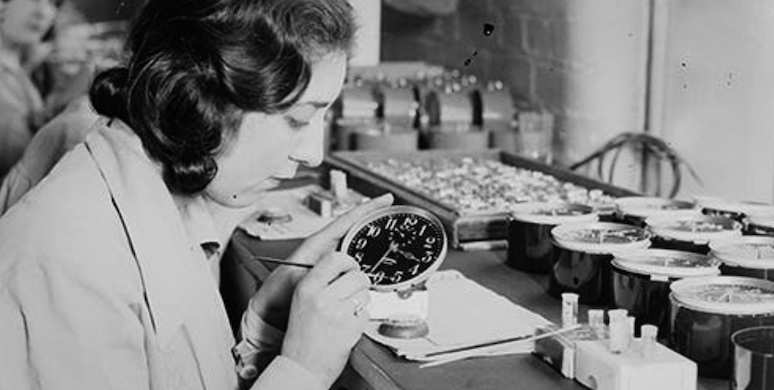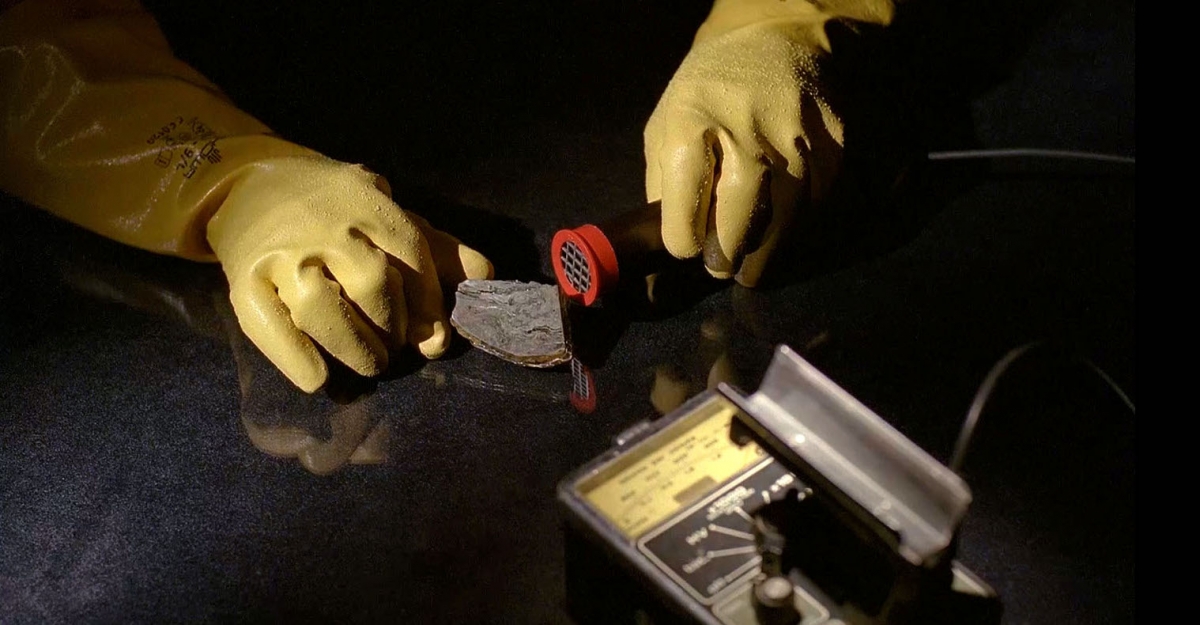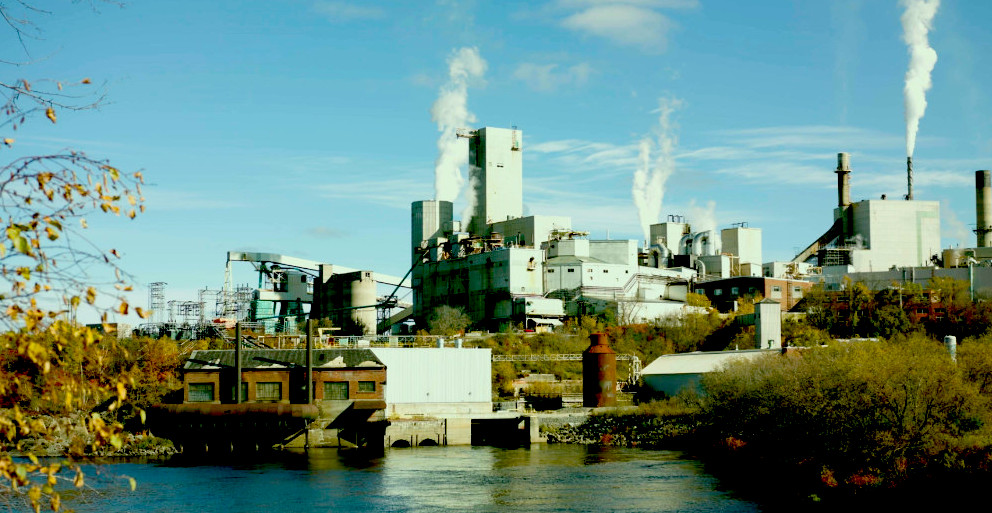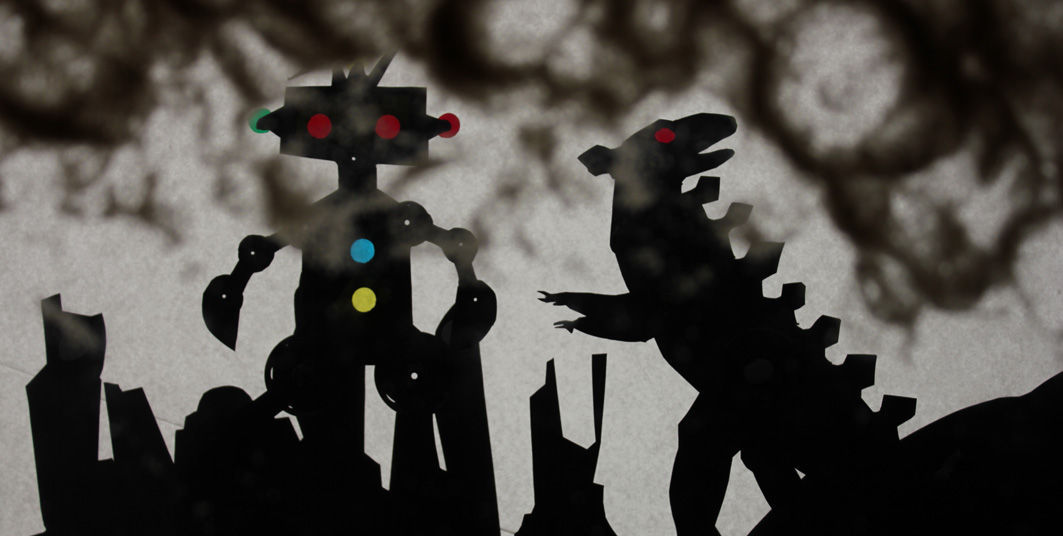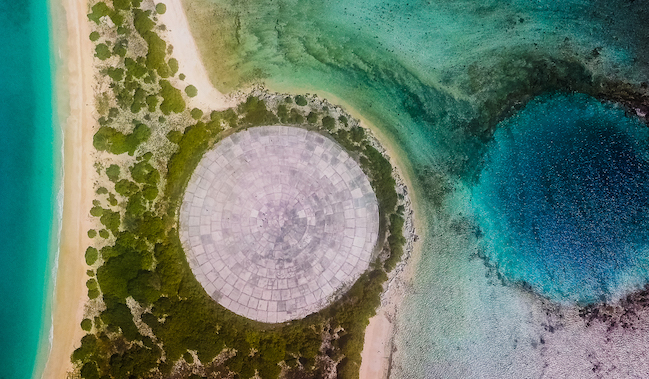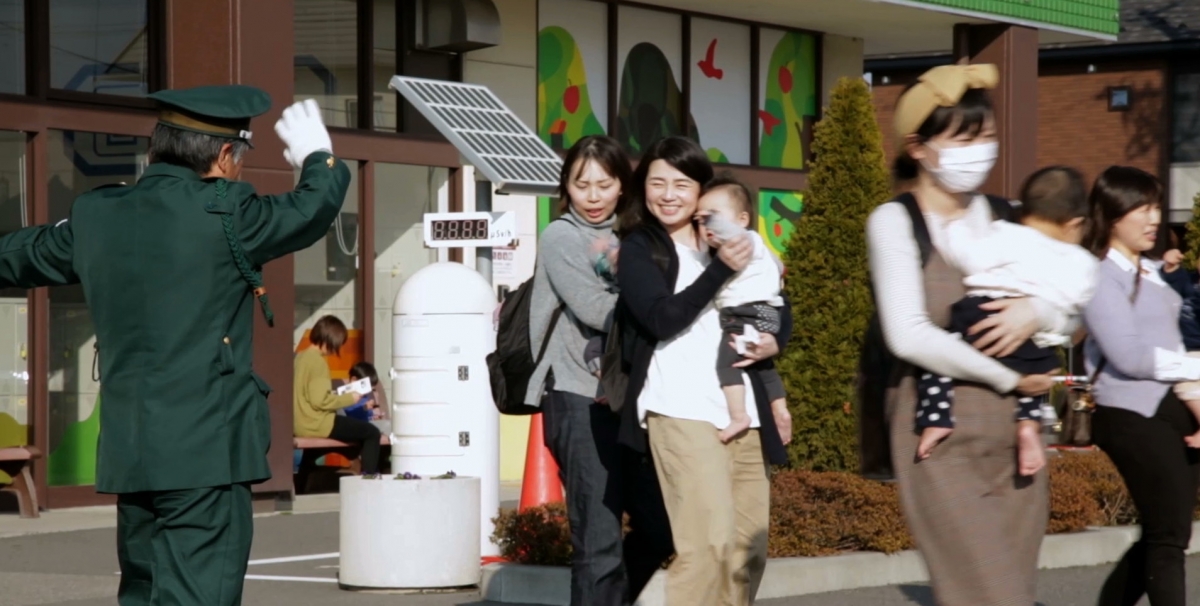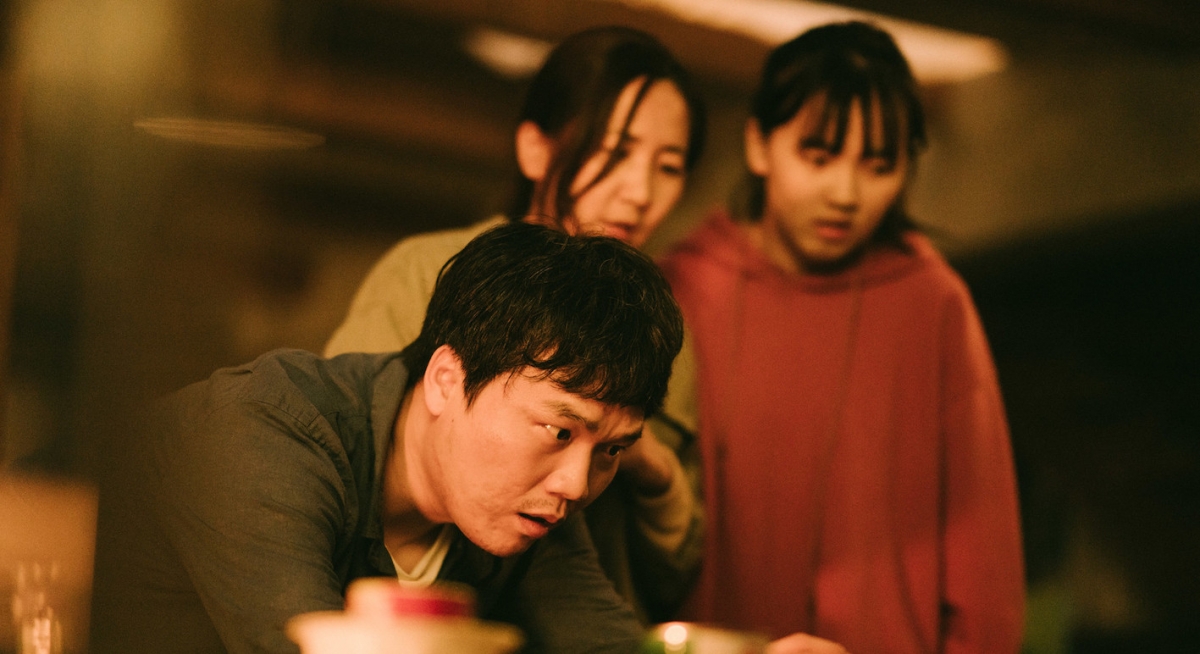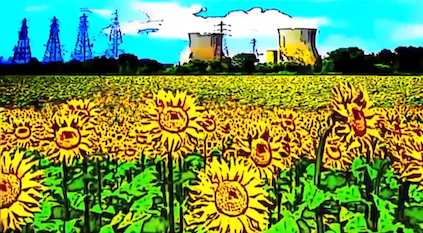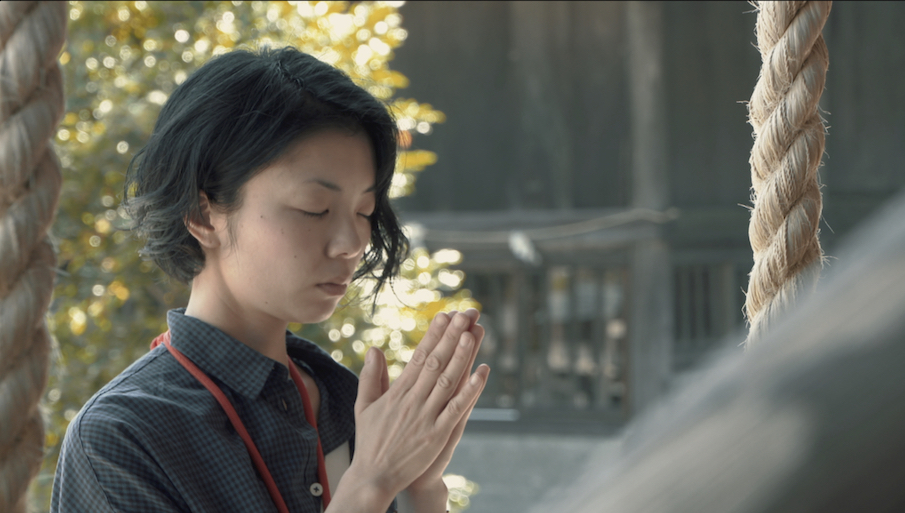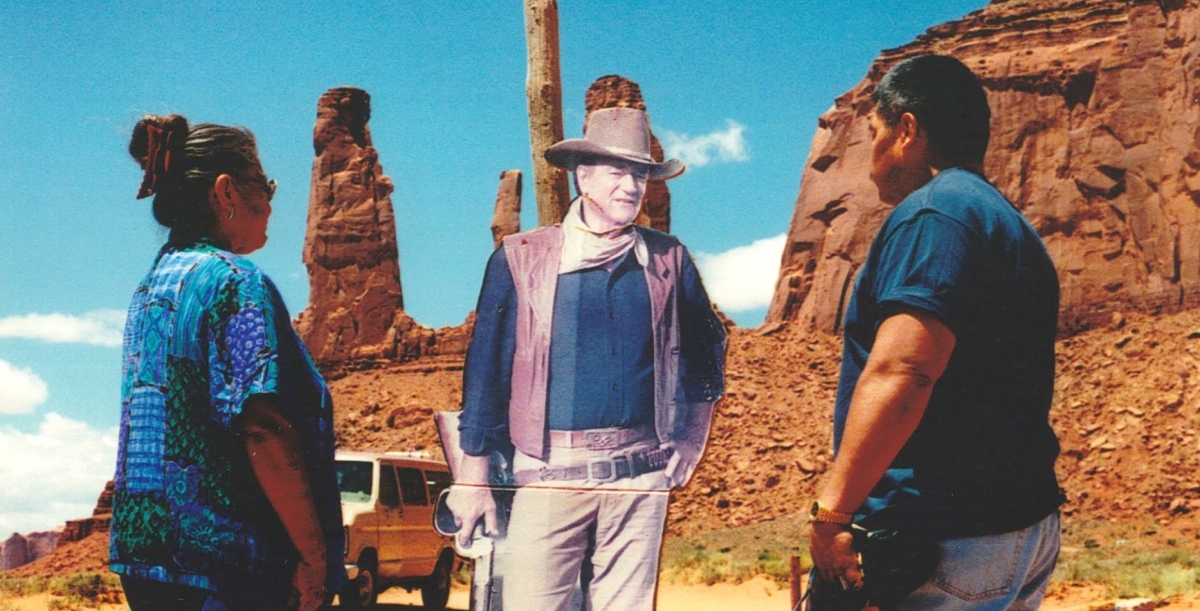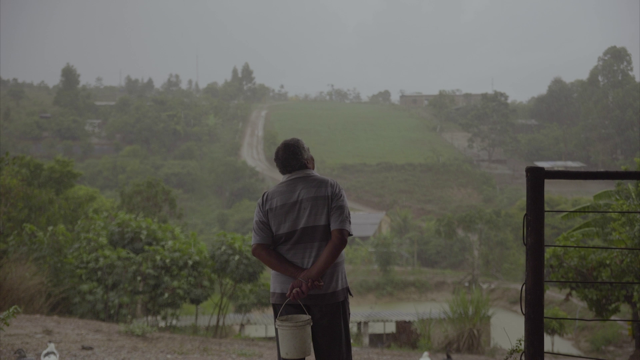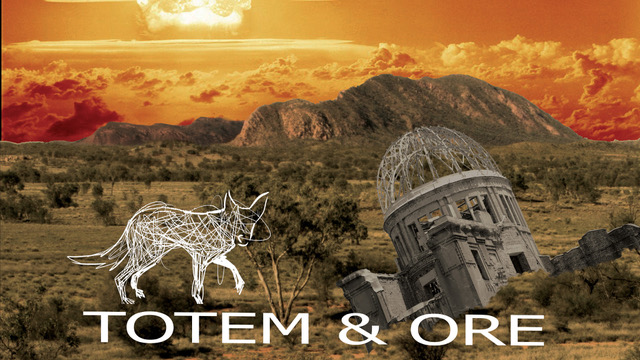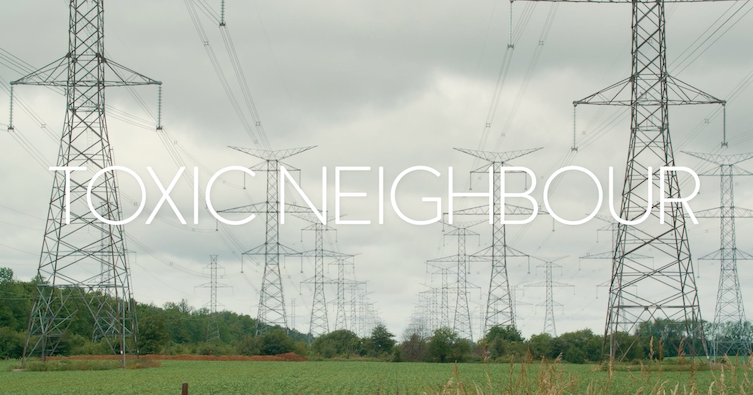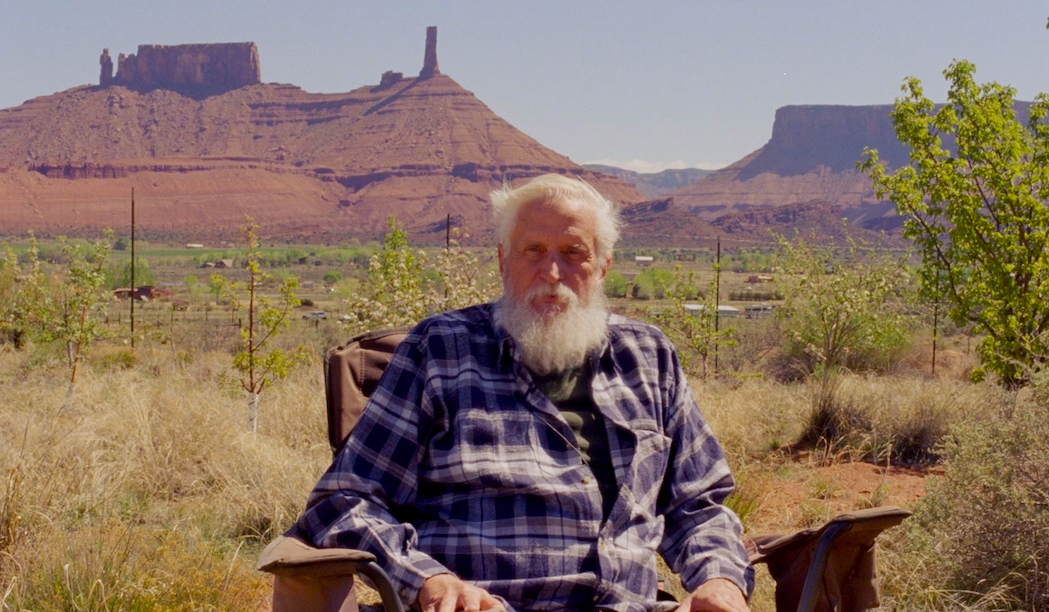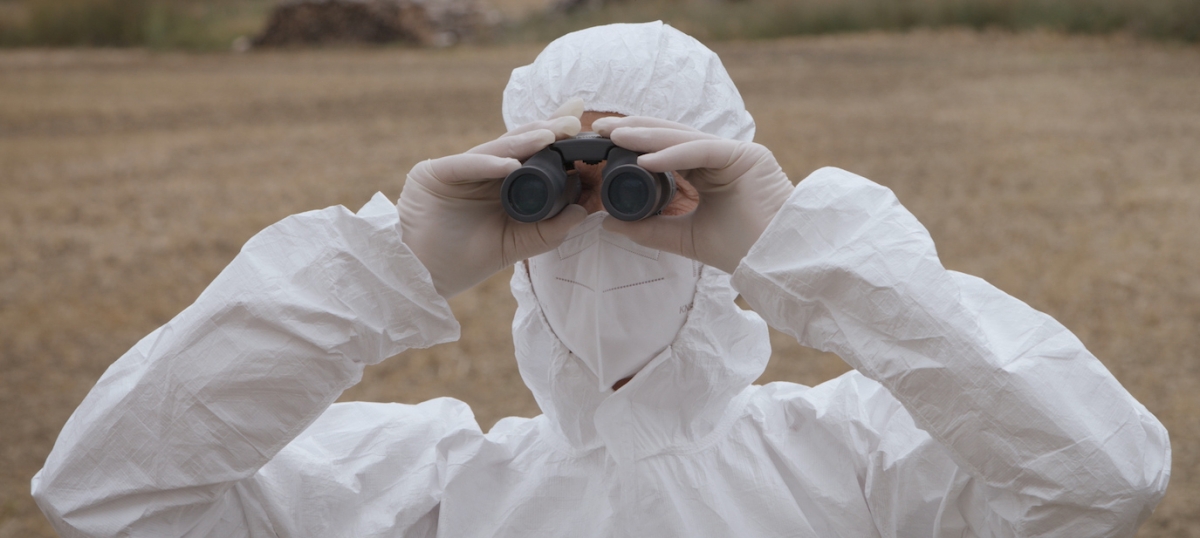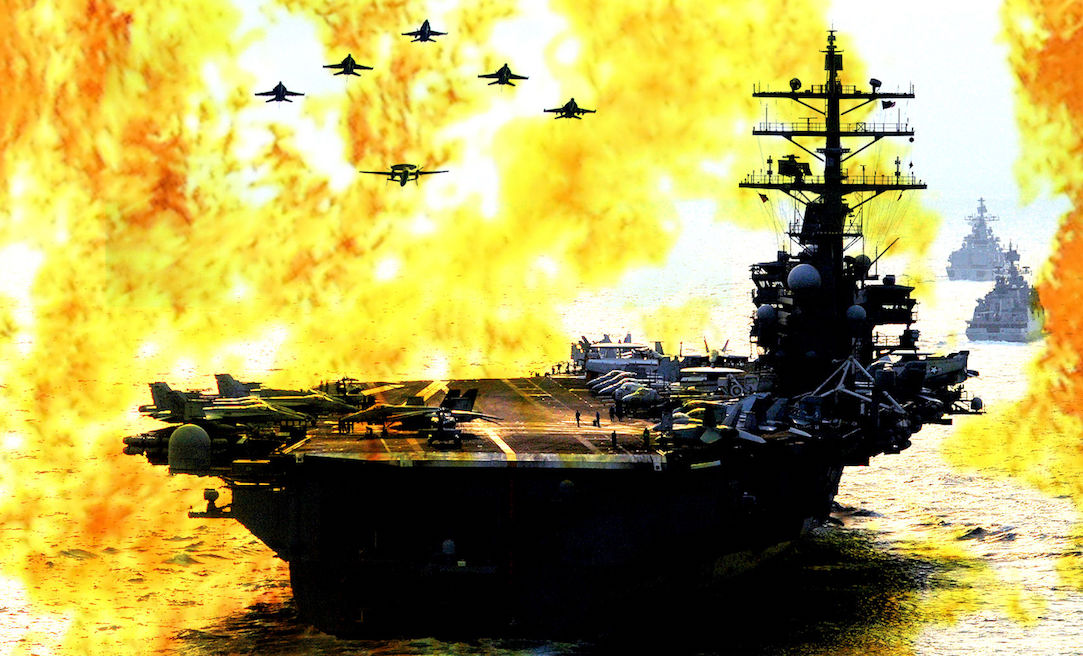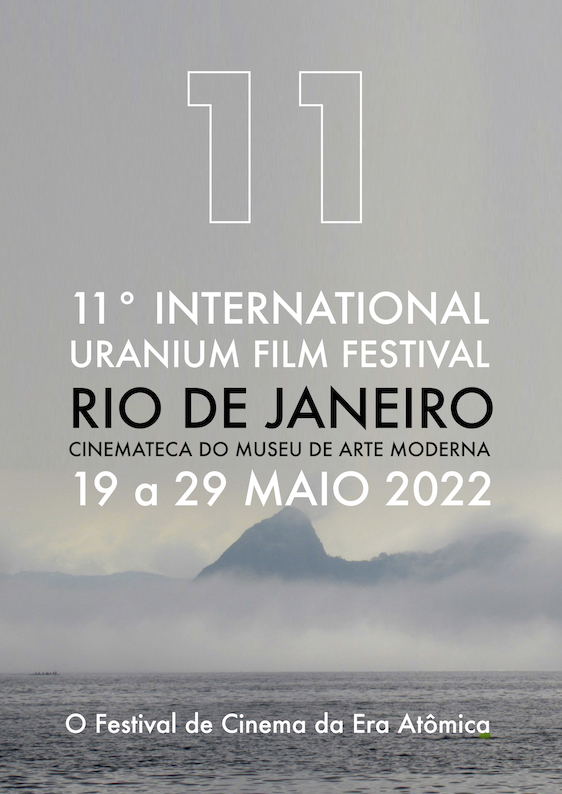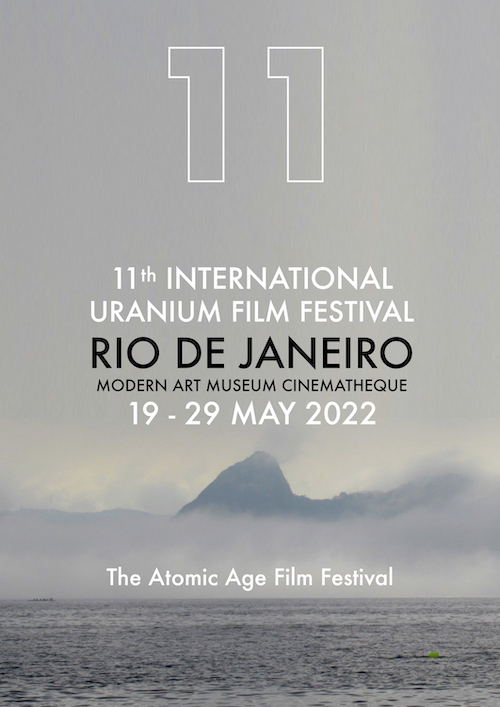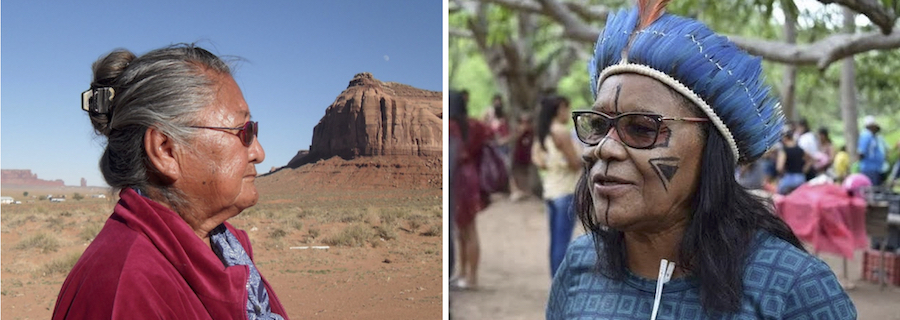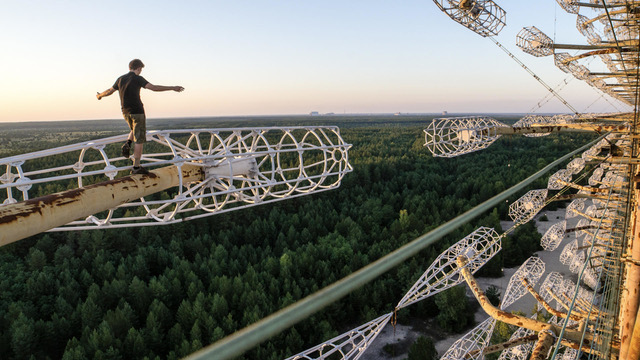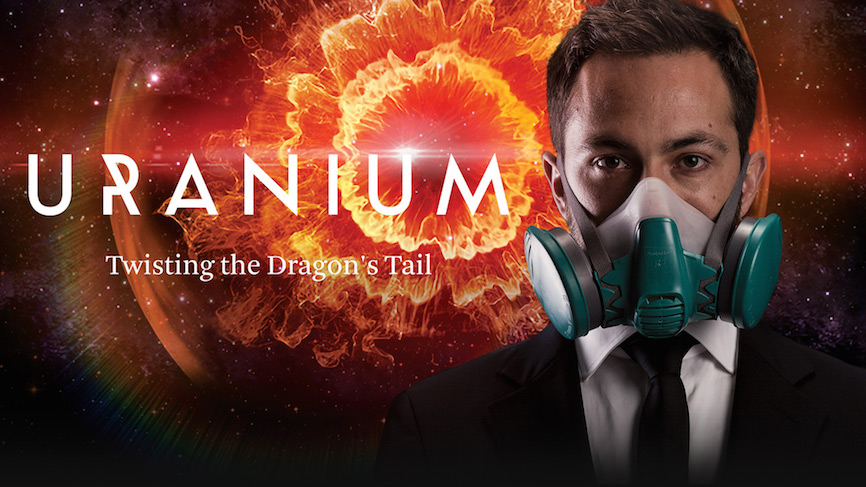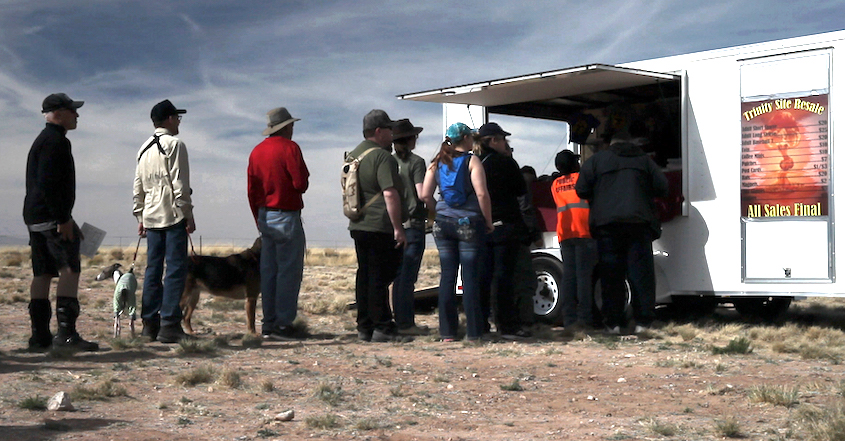Free online screening starts May 19, (24/7)
(Poster Art: Norbert Suchanek)
MONDAY, 23 MAY, 4:00 pm (Rio time)
Uranium Film Festival will bring together, for the first time in history, Navajo who suffered for more than 40 years because of uranium miningand its radioactive heritage and indigenous peoples in Brazil who are threatened with a planned uranium-phosphate mine in Ceará. Meet Navajo grandmother Elsie Begay and John Wayne Cly, Elvis Tabajara, Teka Potyguara, Jardel Potyguara and Toinho Gavião.
Film List (Alphabetical)
USA, 2011, Director and Producer: Nathan Meltz. Animation/Experimental, No Dialogue, 6 min.
The film remakes a section of the 1983 post-nuclear made-for-TV movie 'The Day After', retelling the story of atomic devastation in a Dada collage-meets-stop-animation style. The film showed atomic bombs reducing humans and animals to skeletons, and a city was blown to rubble. About his film
Nathan Meltz says: „ In 1983, when I was 8 years old, my parents had a conversation around the dining room table in my hometown in the northern United States. They debated whether or not to let me watch the made for TV movie called The Day After, which was set to air that evening on network television. They decided that it couldn’t be any worse than letting me watch Star Wars, so that evening I watched the premier of The Day After. The film showed atomic bombs reducing humans and animals to skeletons, and a city was blown to rubble. For years afterwards, I went to bed praying that I would not be bombed to atomic oblivion while I slept. After the Day After is my attempt to come to terms with a lifetime of fear, distrust, and anxiety about nuclear annihilation by filtering a vision of destruction through my personal visual vocabulary of animated collage-based images.
USA, 2021, Director: Greg Mitchell, Co-Producers:
Greg Mitchell and Suzanne Mitchell,
Documentary, 52 min, English, Portuguese subtitles.
The widely-acclaimed 2021 film Atomic Cover-up is the first documentary to explore the bombings of Hiroshima and Nagasaki in 1945 from the unique perspective, words and startling images of the brave cameramen and directors who risked their lives filming in the irradiated aftermath. It reveals how this historic footage, created by a Japanese newsreel crew and then an elite U.S. Army team (who shot the only color reels), was seized, classified top secret, and then buried by American officials for decades to hide the full human costs of the bombings as a dangerous nuclear arms race raged. All the while, the producers of the footage made heroic efforts to find and expose their shocking film, to reveal truths of the atomic bombings that might halt nuclear proliferation. Atomic Cover-up represents, at least in part, the film they were not allowed to make, as well as a tribute to documentarians everywhere.
Japan, 2018, Director Ayumi Nakagawa, Documentary, 65 min, Japanese with English or Portuguese subtitles.
There are many evacuees who had been driven into the poverty after the Japanese government cut off the housing subsidies for those who fled their house after the nuclear disaster in Fukushima in March 2011. Kazuko, who fled her house to Tokyo with her two primary school daughters, has to work over the weekend to pay the expensive rent in Tokyo. She is irregularly employed, which means that if she gets sick, it would affect her income. There are still 70,000 evacuees from contaminated area and this is the documentary to address once again, what is the actual revitalization.
Italy/Australia, 2018, Director
Lisa Camillo, Documentary, 84 min, Italian with English or Portuguese subtitles
When Sardinian-Australian Lisa Camillo, an anthropologist and film director, returns to Sardinia she finds that large chunks of her homeland are devastated by mysterious bombs. On her journey she uncovers secret NATO bombing ranges. Tests with depleted uranium weapons have been having devastating consequences on the local human and animal population. Lisa joins the islanders’ fight to reclaim their land and livelihoods and, in doing so, she is learning about herself and her roots. “Balentes’ is a Sardinian word indicating ‘a man of valour’, who strives for social justice, defending the weak against the oppressors. Sardinians have always been a warrior people, a fact sometimes forgotten, combatting the many invaders landing on their shores over the ages with courage and valour.
Lisa Camillo is a passionate human rights driven filmmaker, anthropologist, presenter and writer. She has directed, produced and wrote award-winning documentaries and films that travelled across the world in several international film festivals.
http://www.balentesfilm.com
Broken Arrow. Nuclear Accident in Palomares (Operación Flecha Rota. Accidente Nuclear en Palomares)
Documentary. Spanish-English with Portuguese subtitles, 96 min.
In January 1966 two American airplanes collided over Palomares (Almería-Spain) and as a consequence, four H-bombs fell to earth. Two of them explode their conventional charge and due to the strong coastal winds radioactive material was scattered over the region. An intensive search started to find the fourth bomb. At the same time the US send troops to begin the decontamination process of the „radioactive“ zone. The narration is strictly told by experts and protagonists and with extraordinary archive film material.
Book to the film.
Marshall islands, United States, 2011, Director Stacy Libokmeto, Documentary, English, Marshallese with Portuguese subtitles, 26 min.
When the United States asked to use the Marshall Islands as an atomic testing ground after WWII, they told the islanders it was “for the good of mankind.” In this exchange, the islands were inundated with an average of 1.6 Hiroshima bombs every day for 12 years. The American nuclear tests may have ended 70 years ago, but the effects of their legacy lingers in the land and the bodies of the Marshallese themselves. Filmmaker Stacy Libokmeto is half Marshallese, half American who was born under the tall trees of a mid-sized Oregon town. Stacy moved to New York City to pursuit a Master's in News and Documentary at New York University.
There she produced her first documentary "Children of Strategic Trust," an idea that started as a promise to herself to one day tell this story for the family who could not.
Trailer.
France, 2021, Director: Martin Boudot, Producer: Luc Hermann & Paul Moreira,
Documentary, French or English with Portuguese subtiltes, 50 min.
In Niger, near a huge uranium mine, some residents live in areas that exceed the radioactivity of the Chernobyl Prohibited Zone. In the meantime, in France, citizens denounce the pollution of the largest uranium conversion plant in Europe. Despite the bans, a team of journalists, with the help of scientists, investigate in the two countries and take dozens of samples to learn more about the pollution of the uranium that feeds our nuclear power plants. Their findings will be picked up by the media, trigger a political debate and will be used as evidence for citizens in a lawsuit against a multinational company.
Trailer:
France/South Africa, 2018, Director Martin Boudot, Producer: Premières Lignes, English/French with Portuguese subtitles, 54 min.
Johannesburg is considered the most uranium-contaminated city in the world. Waste dumps from around 600 abandoned mines sit next to residential communities, blowing polluted dust into homes and contaminating the soil and water supplies. To get a sense of the sheer extent of the problem, Martin Boudot and his team of researchers investigate. Equipped with a Geiger counter, they uncover some dangerous realities.
Trailer.
Greenland, 2020, Director & Producer: Inuk Jørgensen, Documentary,
Original Language: English & Greenlandic, Subtitles English or Portuguese, 7 min.
A cinematic portrait of despair and anxiety towards an unknown future for the Inuit of the world’s largest island.
The film questions the rationale behind past and future mining prospects in Greenland and how they are connected to a search for identity for the fledgling nation.
Trailer:
Spain, 2022, Director & Producer: Jaime García Parra, Fiction/Comedy, Spanish with English or Portuguese subtitles, 14 min.
January 1966 in the south of Spain, a tourism couple is recording themselves in a placid day at the beach. Behind them, some locals decide to cheat on a shepherd, who will play his honor
before the eyes of his beloved in a curious game. Tourists are attracted to the strange game and decide to record it, without being aware of the hecatomb that will happen before the camera.„January 66“ is based on the real atomic bomb accident of Palomares during the Cold War: On 17 January 1966, a B-52G bomber of the USAF Strategic Air Command with four atomic bombs collided with a KC-135 plane tanker during mid-air refueling over the Mediterranean Sea, off the coast of Spain at Palomares. Of the four hydrogen bombs the B-52G carried, three felt on land near the small fishing village Palomares in Almería resulting in the contamination of an at least 2-square-kilometer area by plutonium. The fourth atomic H-bomb fell into the Mediterranean Sea and was lost.
Brazil, 2006, Directors: Miguel Silveira and Elias Lopez-Trabada, Fiction, Portuguese, 10 min.
A poetic, childlike approach to the aftermath of the atomic bombing of Hiroshima and Nagasaki. A young Brazilian Namibian tells her father one day after school the story of the girl on the other side of the world who became ill after the nuclear catastrophe that happened there many decades ago. The Japanese girl was only two years old when an atomic bomb was dropped on Hiroshima. At the age of twelve, she finally contracted leukemia and was hospitalized. There she folds a total of one thousand origami paper cranes. Miguel Silveira's Columbia College Chicago Undergraduate Thesis Film "Namibia, Brasil" is an award winning short film that screened at more than 35 film festivals world-wide including The Cannes Film Festival. Now, thanks to the Uranium Film Festival, it will be screened for the first time in Brazil.
Trailer.
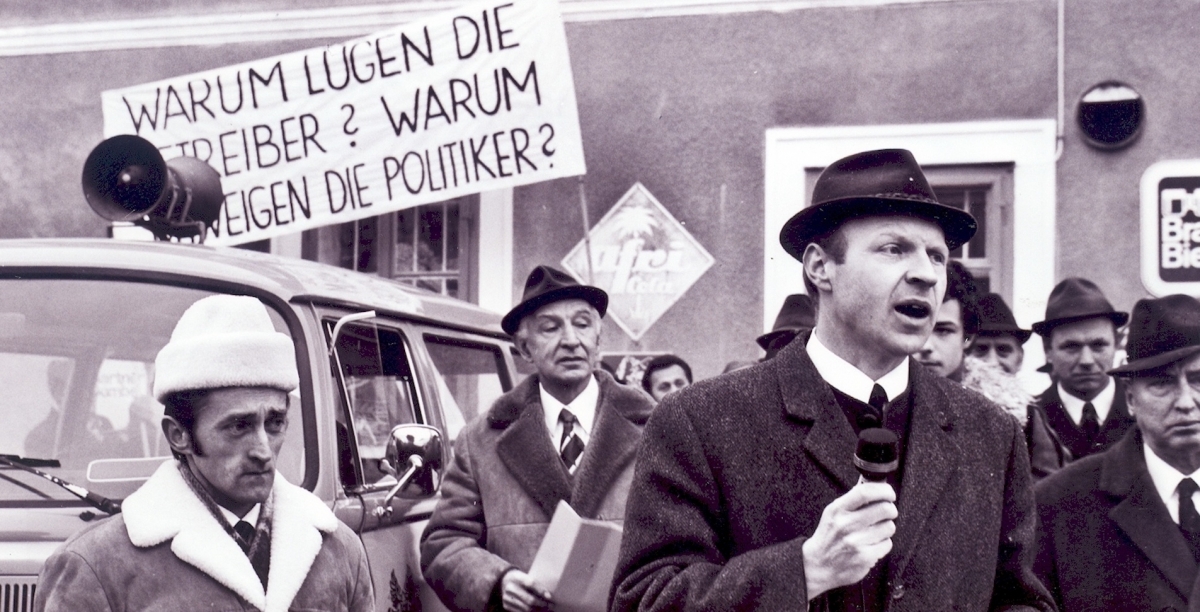
Austria is the only country which built a fully functional nuclear power plant and after peoples vote against it in 1978 didn't engage it. The film traces the anti-nuclear-movement in Austria, with all aspects of nuclear power in Europe, showing the history and provides an outlook on the future. As meta-theme the activities of the NPO "Atomstopp" are shown, their fight alongside democratic institutions from local government to EU-offices. So the film shows the very multifaceted topic with regards to technology, health, environment, politics and democracy, public movements and energy policy. Filmmaker
Markus Kaiser-Mühlecker studied film, video and audio at the University of Applied Sciences Salzburg and sociology at the University of Vienna. Since 2005 he has been living and working as a documentary and corporate filmmaker near Linz. „Nuclear free power to the people“ is his second feature length film and received in 2019 the RAGFF Venezia best retro avantgarde documentary feature film award. Trailer:
www.kmfilm.at/portfolio/atomlos/
USA, 2020, Director & Producer James Anaquad Kleinert, Documentary, English, 127 min.
Trailer.
Stunning Cinematography highlighting Majestic South Western Landscapes & Ecosystems, featuring Viggo Mortensen, Sheryl Crow, Willie Nelson and others, this is a film that audiences will resonate deeply with, as our Plight to Protect the Wild Horses mirrors our fight for a Sustainable Future: "Mustangs & Renegades" is a complex web of events woven into the heart of the American west, documented over a 18 year period. It Follows the true & personal account of Film Maker James Anaquad Kleinert as he document’s the Round Up & Removal of America’s Wild Horses. In Revealing the plight of our Wild Horses, James shows how Public Lands in the US are being sold off to the highest bidders exposing the Privatization of US Publics lands by the Brutal Multi National Extractive Industries.
"Mustang & Renegades" is an epic and honest tale of Activism, Passion, Perseverance and Transformation that touches the core issues - The Protection of our Natural Environment, Constitutional, Civil and Indigenous Rights that are massively threatened! The film is based on the Book: No Country For Truth Tellers by James Anaquad Kleinert. Film Info.
USA/Japna, 2020, Directors: Maria Victoria Sanchez Lara & Ari Beser Producer: Kathleen Sullivan,
Documentary & Animation, English or Portuguese subtitels 5 min.
After 20 years Miyako Jodai returned to the location where she survived the atomic bomb in Nagasaki.
Germany, 2020, Director Claus Biegert, Production Biegertfilm, Music by Zoro Babel,
Documentary, 103 min, German / English with Portuguese subtitles
Hans-Peter Dürr, as a physicist he followed the footsteps of the world re-nowned Werner Heisenberg. As a peace activist he was torn between his PhD supervisor Edward Teller and peace Nobel laureate Josef Rotblat, both of them involved in the Manhattan project during World War II. When it became obvious that Hitler would not built an atomic bomb (Wunderwaffe), Rotblat immediately resigned from Los Alamos, Teller stayed and became the "father of the hydrogen bomb". In the early 1950s, the young and naive Hans-Peter from Stuttgart, Germany, stepped into the bomb euphoria in Berkeley, California. It shaped his life.
He became a role model for a scientist with responsibility.
TRAILER
France, 2019, Director Larbi Benchiha, Documentary, 52 min, French/English, with Portuguese subtitles.
Many of us do not know or have forgotten: More or less 250 uranium mines were explored in France from 1945 to 2001, resulting in 252 million tons of radioactive waste that remain in the ecosystem. Between 1955 and 1984, 42 uranium mines were explored in Brittany. 26 of them are in the department of Morbihan. This uranium mining and extraction produced waste that remains harmful until today. The radiation in the people's backyards are 1,000 to 3,000 times higher than tolerable. Filmmaker Larbi Benchiha has followed in the invisible footsteps of this waste in the highly radiant Brittany countryside.
Trailer.
France, 2020, Directed by KenichiWatanabe, Production: Kami productions,
Documetary, English/French with Portuguese subtitles, 56 min.
The USS Ronald Reagan cruised into a radioactive cloud from the Fukushima nuclear power plant in March 2011. Sailors on the aircraft carrier were exposed to radiation. This documentary looks at the event and what came before it. The film is a historical investigation into the phenomenon of radioactivity. From the Curie spouses to Fukushima, through the history of atomic bombings and nuclear disasters, the film gives meaning to the stories of victims, soldiers and irradiated children, while revealing the lies of the world of the atom. Info/Trailer:
www.kamiproductions.fr
Canada, 2018, Director and Producer: Jesse Andrewartha, Documentary, English, 15 min.
Photography & Radiation is a personal journey by visual artist Jesse Andrewartha, who explores the history of the autoradiogram as he creates a new body of work, a series of uranium autoradiograms for the upcoming exhibition “Transmutations: Visualizing Matter | Materializing Vision”. Trailer:
https://vimeo.com/253012170
Canada, 2020, Director: Daniel Hackborn, Producer: Patrick Borgers, Cinematography by Hannah Joosse, Documentary, English, 10 min.
Playing With Uranium looks at the legacy of the Uranium mines that existed in and around Elliot Lake throughout the later half of the 20th century. The mining executives and shareholders made millions of dollars, while the people who call the land of Elliot Lake home, and the Anishinaabe of Serpent River, are left to deal with the millions of tonnes of tailings that have been left scattered throughout the boreal forest in man-made lakes and dugouts. Trailer:
https://www.hannahjoosse.com/documentary/uranium
Canada, 2014, Director & Producer: Lynn Dana Wilton, Animation, no dialogue, 22 seconds.
In a battle for supremacy, who will prevail? "Robot Monster Us" is intended to be a succinct comment on how humans wreak such damage to our environment, there's nothing invading giant monsters or robots could do to top it. While nuclear power doesn't emit carbon dioxide in the same manner of fossil fuels, the "smoke" (sand animation) is meant to represent the pollution that frequently goes 'under the radar' such as radiation, the results of mining & refining uranium, and the costs of transporting & sequestering the radioactive waste.
Website
SAM AND THE PLANT NEXT DOOR
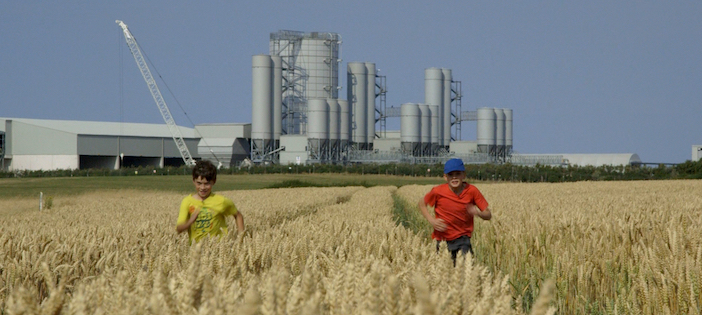
Denmark/UK - 2019, Director Ömer Sami, Documentary, English with Portuguese subtitles. 23 min.
Growing up in the shadows of Britain’s biggest new nuclear power plant, Hinkley Point C, eleven-year-old Sam is worried about what it means for the world around him and must decide what kind of person he wants to be. Drifting between his daily life and dreams, the film explores themes of holding on and letting go, and growing up. Sam believes the only way is to go a private school – but his parents can’t afford the offer. As a last resort, they turn to the power company for funding, forcing Sam to decide. This Guardian documentary meets a boy who must choose between opposing Hinkley Point C nuclear power plant and benefiting from its educational bursary. Hinkley Point, on the Somerset coast, is the biggest building site in Europe and the most expensive nuclear power station in the world. Trailer.
2021, USA/Marshall Islands, Director Nico Edwards, English with Portuguese subtitles, 35 min.
I︎︎︎︎︎︎︎n the middle of the pacific ocean, the sailing ship Infinity and her ragtag crew stumble upon one of the most dangerous islands on earth. Birthplace of the hydrogen bomb, this tiny atoll absorbed the nuclearequivalent of 1.5 Hiroshima bombs a day for 12 years. That legacy waits near the beach, in a giant unguarded crumbling concrete dome. Atomic Test Clean-up Veteran Paul Griego about the film: „I feel it is as great film and so have the other atomic cleanup personnel I have spoken to.“
FRANCE, 2020, Director: FRANCK SANSON, Producer: PRONTOPROD & A2DOCK FILMS,
Documentary, Original Language: french, english, japan, Subtitles: English or Portuguese, 55 min.
One thing Fukushima in Japan and La Hague in France have in common is the fear of nuclear power. For some, it has turned into a hellish reality, for others, an ever-present disquiet, whether conscious or unconscious. « Skin Deep Fear » is a film born of a personal shock to the author, that of the nuclear disaster in Fukushima. The event roused memories long forgotten which once resurfaced, evoked a very real question : does the fear of nuclear exist? Trailer:
https://vimeo.com/416679751
Ukraine/USA/Bulgaria/Slovakia, 2020, Director & Producer: Iara Lee, English/Russian /Ukrainian, Subtitles English or Portuguese, 57 min.
Stalking Chernobyl, a forthcoming documentary from Cultures of Resistance Films, examines the underground culture of the Chernobyl Exclusion Zone. Three decades after the world's most infamous nuclear disaster, wildlife has returned in the absence of human settlements. Meanwhile, illegal hiking adventurers known as "stalkers," extreme sports aficionados, artists, and tour companies have begun to explore anew the ghostly, post-apocalyptic landscape. Info/trailer:
https://culturesofresistancefilms.com
South Korea Year, 2020, Director: Choi Yang Hyun, Producer: Lee Jieun, Fiction,
Korean with English or with Portuguese subtitles, 94 min.
Pan-Gyo which is Korean Silicon Valley was attacked by Nuclear bomb. The member of family who is owned venture business decided to hide at basement in their house for 2 weeks in accordance with direction from Korean Government. The family was started to struggle to survive in the basement day by day... The film was produced during Covid-19 Pandemic in 2020. This film invokes metaphor for a middle class life when they tried to survive against a risk of extinction such as nuclear attack or pandemic while they were isolated drastically from the outside.
Choi Yang Hyun was born in Seoul. He received his BA film directing and Korean literature at university and his MA image engineering at graduate school. His short feature films have been nominated or won in many film festivals. Currently, He is directly managing a film production called Paranoi Future Cinema Lab. "The Basement" is his first full length feature film.
Trailer:
THE GARDEN
USA, 2021, Director & Producer Bill McCarthy, Animation, English with Portuguese subtitles. 7 min.
The Garden is the story of a blind Indian Shaman who begins planting a garden at the gates of a nuclear weapons facility. The Shaman is confronted by the foreman who demands she stop planting. Disregarding his demand, the Shaman continues planting, resulting in a giant garden of sunflowers which overwhelms the staff of the facility and starts covering the nuclear plant.
France, 2021, Director Keiko Courdy, Producer PIKA PIKA FILMS, Music by Ryuichi Sakamoto and Seigen Ono,
Support from KissKissBankers, Documentary, 87 min, Japanese with English / Portuguese subtitles.
Waves crash eternally on the shore of Fukushima Daiichi Nuclear Power Plant. Next to a white facility for radioactive waste burning, black bags of contaminated soil pile up while a family looks for traces of their house. The film relates the stories of people who survived the tsunami and were forced to leave their home, people who came back in the darkest times, and people who came to work from far away, decontamination workers of Fukushima Daiichi. In the zone, invisible traumas are everywhere. There is no life without risk but what risk are we ready to take? In Japan, everyone wishes to forget and go forward, but the traces can not be erased that easily.
Trailer
USA 2000/2008, Director: Jeff Spitz, Produced by Jeff Spitz and Bennie Klain,
Documentary, English with Portuguese subtitles, 72 min.
Trailer.The Return of Navajo Boy is an internationally acclaimed documentary that reunited a Navajo family and triggered a federal investigation into uranium contamination. It tells the story of Elsie Mae Begay, whose history in pictures reveals an incredible and ongoing struggle for environmental justice. The film chronicles an extraordinary chain of events, beginning with the appearance of a 1950s film reel, which lead to the return of a long lost brother to his Navajo family, living in the Monument Valley. A powerful epilogue (produced in 2008) shows how the film and Groundswell Educational Films’ outreach campaign create news and rally supporters including Congressman Henry Waxman (D-CA). The Chairman of the Committee on Oversight and Government Reform mandated a clean-up plan by the five agencies that are responsible for uranium contamination. The documentary, epilogue and now 15 webisodes have leveraged several remarkable impacts: Bernie Cly, one of the Navajo family featured, has been awarded $100,000 in compensation from the US government. And in April 2014, the Navajo nation won the largest environmental settlement in US-American history, $1 billion payout from Kerr-McGee, the corporate contaminator exposed by the documentary.
Website.
TO NOT FORGET (Para não esquecer)
Brazil, 2022, Directed by Gabriel Leal, Production Centeio Filmes, 40 min, Portuguese, World Premiere.
Many memories have been lost by those who live two lives, one before and one after the Cesium 137 accident in Goiânia, Goiás, Brazil. Cesium victim Odesson couldn't keep anything from before 1987 apart from his memories. Thinking about preserving the story of the accident, he tells how those days were from his perspective. Gabriel Leal is a 27 years old filmmaker from Goiânia. He graduated in journalism at the Federal University of Ouro Preto. Gabriel is passionate about listening and telling stories.
Australia, 2019, Director & Producer: John Mandelberg, Executive Producer: Bozic Wongar,
Actress and Narrator: Ursula Yovich, Documentary, English, Japanese, Russian, English & Portuguese subtitles, 97 min.
TOTEM & ORE starts in 1945 with the Hiroshima bombing and ends with the Fukushima nuclear meltdown in 2011. The film explores the effects of Nuclear bombs and weapons testing across the globe, from the Manhattan Project's first Atomic bomb test in the desert of Nevada, to the Hiroshima and Nagasaki bombs in 1945, and the first British thermonuclear test at Christmas Island in the Gilbert Island chain in the North Pacific in 1963. In Australia, the tragedy of uranium exploration, mining and British atomic testing in 1950’s Aboriginal Australia. Starting at the Hiroshima bomb and ending at the nuclear meltdown in Fukushima. The historic tragedies and fear told by atomic bomb witnesses, activists, filmmakers, artists, actors, writers composers, doctors, professors. Aboriginal Actress, Ursula Yovich reflects on her visit to Hiroshima, her appeal that “No place in the world for Nuclear weapons!”
Trailer.
Canada, 2021, Director: Colin Scheyen, Producer: Ann Shin and Hannah Donegan,
Documentary, English with Portuguese subtitles, 25 min.
Eugene Bourgeois had no concerns about nuclear energy when he built his farm next door to the world's largest nuclear facility in 1974. Over that time, he and his wife Ann ran a successful wool business and taught generations of people around the world the art of knitting. They really believed they had found paradise. However, over the next few decades, Eugene, his family, and his sheep flock were frequently exposed to hydrogen sulfide, a deadly nerve gas from the nuclear plant, which caused hundreds of his sheep to be blinded, born deformed, or killed. The industry has denied any wrong doing, but Eugene has always known the truth and dedicated the rest of his life to pushing his nuclear neighbour for greater transparency and accountability. Trailer:
https://vimeo.com/609829443
USA/Canada, 2021, Director Jesse Andrewartha, Producer: Marcos Fajardo, Documentary, English with Portuguese subtitles. 70 min.
Transmutations is a multi-year project that explores the history, legacy and radioactivity of uranium mining during the Cold War in Canada and the US. Captured over the course of three years using 35mm motion picture film and digital technologies, the film reveals the mineral and the people whose lives have been impacted by uranium: ex-miners that toiled decades underground, Indigenous leaders and activists leading the charge to clean up the mines and the places that shifted the balance of power on a global scale. Project website
https://www.transmutationsproject.com
Netherlands, 2021, Director: Tineke van Veen & Barbara Prezelj, Producer: Tineke van Veen,
short documentary, English with Portuguese subtitles, 9 min.
Unsettling Dust, a collaborative short film project, explores the lived, bodily experience of radiation by focusing on the relationship between post-nuclear landscapes, radioactive dust and breathing. It draws attention to Fort de Vaujours, a former nuclear weapon testing site on the outskirts of Paris and asks what it means to be living with the threat of contagion, with doubt cast upon your every single breath. Film website:
http://www.tinekevanveen.com
Australia, 2015, Director Wain Fimeri, Producer Sonya Pemberton. Documentary, 51 min. English with Portuguese Subtitles.
At the turn of the 20th century uranium is virtually unknown and basically worthless. Dr Derek Muller embarks on an adventure to reveal how, in just a single generation, uranium transforms into the most valuable and terrifying rock on Earth. The discoveries of scientists such as Marie Curie, Ernest Rutherford and Albert Einstein unlock the secrets of the uranium atom, and allow us to peer into the very nature of the universe. Then one clear morning above the city of Hiroshima, uranium unleashes a terrifying power and changes the world forever.
Trailer.
USA, 2021, Director & Producer: Hope Tucker, Experimental documentary, English with Portuguese subtitles., 14 min.
Residents of and visitors to the Tularosa Basin of New Mexico, site of the first detonation of an atomic bomb, contribute to the production of public memory as they offer logistical advice, philosophical reckonings, and plaintive cries about making "the journey of the dead." Made in remembrance of the 75th anniversary of the detonation of nuclear weapons in Japan and the US and the 340th anniversary of the 1680 Pueblo Revolt. Made in resistance to nuclear colonialism. "Tucker's way of representing the historical past makes us reconsider what the past historical time should be and what kind of action we should take to commemorate it." Kim Taein, Curator of Museum of Contemporary Art Busan. More info:
http://www.theobituaryproject.org
New Zealand, 2022, Director A.K. Strom, Sci-Fi-Thriller, with Campbell Rousselle and Graham Vincent,
English with Portuguese subtitles, 87 min.
The most chillingly real buildup to nuclear war ever put on film. A nuclear thriller with a documentary feel. "World War 4 - the Realism cut" is a special cut of the film designed to bring home the full reality of this unfolding nightmare. Seven years in the making, this is a most chilling nuclear war film. Watch as real armies march, bombs rain down, and soldiers storm the beaches. One family is caught up in the ever-growing conflict. Can they survive as total war is declared and nuclear weapons are unleashed?
_______________________________________
DONATE with PayPal
Contact:
International Uranium Film Festival
Rua Monte Alegre 356 / 301
Rio de Janeiro/RJ
CEP 20.240-194
info@uraniumfilmfestival.org
www.uraniumfilmfestival.org
